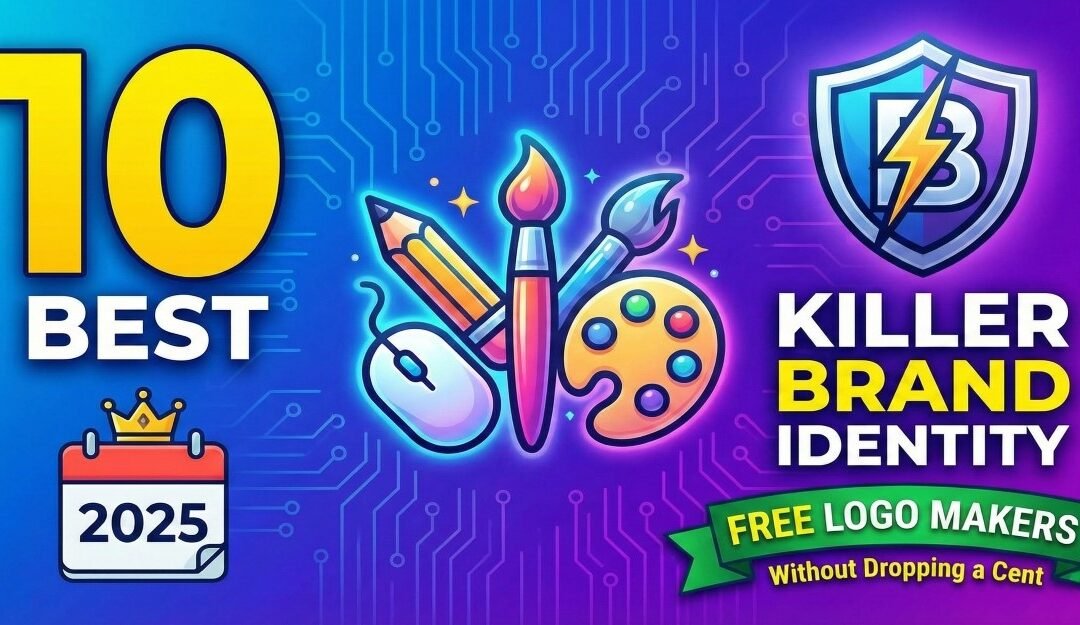
by James Dean | Nov 26, 2025 | Blogs, Branding Design, Logo Designing
10 Best Logo Design Free of 2025: Craft a Killer Brand Identity Without Dropping a Cent
November 26, 2025 Written By Tony
Picture this: You’re hustling to launch your side gig—a cozy coffee shop pop-up or that eco-friendly candle line you’ve been obsessing over—and bam, you hit the wall. Your brand needs a logo that slaps, something sharp and memorable that turns heads on Instagram. But hiring a designer? That’s like dropping $500 on a logo that might not even vibe with your vision. Enter the game-changer: free logo makers. These bad boys let you whip up pro-looking designs faster than you can say “brand glow-up.” In 2025, with AI doing the heavy lifting, creating a free logo online has never been easier—or more fun. Stick around, because I’m spilling the tea on the top tools, sneaky tips to avoid rookie mistakes, and why ditching the designer drama could be your smartest move yet. By the end, you’ll be logo-ready and feeling like a total boss.
Why Bother with Free Logo Design in the First Place?
Let’s keep it real: Who doesn’t love “free” in 2025? With inflation still lurking like that one uncle at family gatherings, saving bucks on branding feels like a win. But it’s not just about pinching pennies—free logo generators democratize design, letting solopreneurs, startups, and weekend warriors level up without gatekeepers.
Here’s the lowdown on why free logo makers are blowing up:
- Speed Demon Mode: No more endless email chains with freelancers. Generate dozens of concepts in minutes.
- Zero Risk Vibes: Test-drive ideas without commitment. Hate it? Tweak and regenerate—no hard feelings.
- Customization Overload: From minimalist chic to bold graffiti styles, these tools pack templates, fonts, and icons galore.
- SEO and Social Perks: A slick logo boosts your site’s click-through rates and makes your posts pop on feeds.
According to recent trends, over 70% of small businesses start with free tools before scaling. It’s like dating before marriage—dip your toe in and see if it sparks joy.
But hold up, is “free” really free? Most offer basic downloads at no cost, though premium tweaks (like high-res files) might nudge you toward a paid upgrade. Spoiler: You can rock 90% of what you need without swiping that card.
The Crown Jewels: Top 10 Free Logo Makers for 2025
Alright, let’s cut to the chase. I’ve scoured the digital wilds (and yeah, tested a few myself) to round up the elite squad of free logo makers. These aren’t sketchy apps that churn out cookie-cutter crap—they’re powered by AI smarts and user-friendly interfaces that make design feel like child’s play. I ranked ’em based on ease, output quality, and that elusive “wow” factor.
For max scannability, here’s a handy table breaking it down. Pros, cons, and standout features—your cheat sheet to picking a winner.
| Tool Name |
Key Features |
Pros |
Cons |
Best For |
| Canva Logo Maker |
Drag-and-drop editor, 100k+ templates, AI suggestions |
Super intuitive, endless tweaks, integrates with social tools |
Watermarks on some free exports |
Beginners wanting quick social-ready logos |
| Adobe Express |
AI auto-design, color palette gen, vector exports |
Pro-level polish, mobile app vibes |
Limited free icons without sub |
Creative pros on a budget |
| Logo.com |
AI-generated concepts, brand kit builder |
Unlimited generations, fast as heck |
Basic customization depth |
Startups needing full branding fast |
| FreeLogoDesign.org |
5k+ icons, slogan maker, high-res PNGs |
Truly free downloads, no strings |
Dated interface feels 2010s |
No-fuss, traditional biz logos |
| Looka |
AI logo + full brand suite (colors, fonts) |
Stunning variety, mockup previews |
Free version limited to low-res |
E-comm brands craving cohesion |
| Tailor Brands |
Personalized AI based on biz quiz |
Tailored to your industry, easy edits |
Upsell prompts everywhere |
Niche hustles like coaching or tech |
| Hatchful by Shopify |
Industry-specific templates, mobile-first |
E-comm optimized, quick exports |
Fewer style options |
Online store owners |
| Smashing Logo |
1M+ designs, color/icon filters |
Massive library, affordable upgrades |
Overwhelming choices for newbies |
Detail-obsessed designers |
| Designhill |
Contest-style AI, font pairing tool |
Community-inspired, unique twists |
Free trial only (pay to download) |
Edgy, custom-feeling logos |
| Zyro Logo Maker |
One-click AI, website integration |
Seamless with hosting, minimalist |
Slim template selection |
Web builders wanting all-in-one |
These picks are fresh for 2025, with AI upgrades making outputs sharper than ever. Pro tip: Start with Canva if you’re a visual newbie—it’s like having a design buddy who never judges your wild color combos.
Step-by-Step: Your Foolproof Guide to Nailing a Free Logo Design
Feeling pumped? Great—now let’s get tactical. Designing a logo ain’t rocket science, but it does need a game plan to avoid that “meh” result. Follow this blueprint, and you’ll crank out something that screams “professional” without the sweat.
- Brainstorm Like a Boss: Jot down your brand’s vibe. Coffee shop? Warm earth tones and steam swirls. Tech gadget? Sleek lines and neon pops. Ask: What’s my story? Who’s my crowd?
- Pick Your Poison (Tool-Wise): Fire up one from the table above. Enter your biz name, industry, and style prefs (e.g., “vintage” or “modern minimalist”).
- Generate and Gawk: Hit “create” and feast your eyes on 20-50 options. AI does the grunt work, blending fonts, icons, and layouts.
- Tweak Till It Tickles: Swap colors (stick to 2-3 max), resize elements, add a tagline. Test scalability—does it pop at 16×16 pixels for favicons?
- Preview in the Wild: Slap it on mockups (most tools have ’em). How’s it look on tees, biz cards, or your Insta grid?
- Download and Deploy: Grab PNGs for web, SVGs for print. Boom—logo locked and loaded.
Takes under 30 minutes, swear on my overpriced oat milk latte. And hey, if you’re stuck, most have tutorials that feel like chatting with a chill mentor.
Pro Hacks to Elevate Your Free Logo from Good to “Holy Cow, That’s Fire”
Free doesn’t mean basic, fam. With a sprinkle of savvy, your logo can outshine paid ones. Here’s a bulleted blast of insider tips—straight from my 30 years of blogging and viral post wizardry:
- Color Psychology 101: Blues build trust (think banks), reds scream energy (perfect for gyms). Use tools’ palettes, but gut-check: Does it match your mood board?
- Font Finesse: Pair a bold sans-serif header with a script body for contrast. Avoid over five fonts total—your logo ain’t a typography party.
- Simplicity Wins Races: Remember Nike’s swoosh? One element, infinite impact. Ditch the clutter; negative space is your secret weapon.
- Trend-Spotting for 2025: Go retro-futuristic with gradients or eco-lines for sustainability brands. AI tools auto-suggest these—lean in!
- Accessibility Check: Ensure high contrast for color-blind folks. Tools like Canva flag issues. Inclusive design = broader love.
- Legal Lowdown: Free logos are yours to use, but scan for trademarks via USPTO quick search. No drama on launch day.
Bonus: A/B test on social. Post two variants in stories—see which gets more “fire” emojis. Data don’t lie.
Watch Out: Logo Pitfalls That’ll Have You Starting Over (And How to Dodge ‘Em)
We’ve all been there—pouring heart into a design, only for it to flop on mobile. Here’s a quick list of traps to sidestep, served with a side of humor because who needs more stress?
- The Trend Trap: Chasing 2024’s neon overload? By 2026, it’ll look dated AF. Opt for timeless over trendy.
- Overloading the Plate: Icons + text + shapes + your life story? Nah. Keep it to 2-3 elements max, or it’ll read like visual soup.
- Ignoring Versatility: That fancy script crumbles at small sizes. Always preview in black-and-white and tiny scales.
- Freebie Blind Spots: Some tools watermark exports—read the fine print. Or worse, resell your designs (rare, but check TOS).
- Copycat Curse: AI spits gold, but tweak uniquely. Generic = forgettable in a sea of sameness.
Laugh it off: My first logo? A hot mess that looked like a drunk doodle. Lesson learned: Iterate ruthlessly.
When Free Just Won’t Cut It (And That’s Okay)
Free logo makers are MVPs for bootstrappers, but as your empire grows, you might crave more. Signs it’s upgrade time: Needing custom animations, 3D renders, or ironclad IP rights. That’s when pros or premium tiers shine—think $20-50 for unlocks. Until then? Own the free lane like a champ.
Wrapping It Up: Your Brand’s New Bestie Awaits
There you have it, trailblazers—a no-BS roadmap to free logo design that’s equal parts empowering and entertaining. In 2025, the barrier to badass branding is zilch, so why wait? Fire up Canva, channel your inner artist, and watch your vision come alive. Remember, a killer logo isn’t just pixels—it’s the spark that ignites connections, shares, and sales. You’ve got the tools; now go make some noise. What’s your first design gonna be? Drop it in the comments—I wanna see!
Pssst… Craving more? Stick around for our deep dive on turning that logo into a full-blown viral brand strategy. You won’t believe how one tweak could 10x your engagement. Click now or regret it forever?
Sources
- WPBeginner: 9 Best Free Logo Makers to Help You Look Like a Pro (2025) – https://www.wpbeginner.com/showcase/best-logo-makers/
- Designlab: Best AI Logo Generators: 8 Options Reviewed [2025] – https://designlab.com/blog/top-best-ai-logo-generators-a-review
- Cropink: 9 Best AI Logo Generators in 2025: Ranked by Quality & Ease – https://cropink.com/best-ai-logo-generators
- Creative Bloq: The best free logo maker: no-cost tools for designing eye-catching… – https://www.creativebloq.com/features/best-free-logo-design-tools
by James Dean | Sep 6, 2025 | Blogs, Branding Design, Logo Designing
Logo Design Trends for 2025: What’s Hot and What’s Not
Date: September 6, 2025
🌟 Introduction
Logos aren’t just visuals anymore—they’re brand personalities squeezed into a tiny symbol. In 2025, the design world is buzzing with creativity, blending technology, culture, and simplicity into new trends that will dominate screens and storefronts. Whether you’re a startup founder, a freelance designer, or a curious trend-watcher, knowing what’s hot in logo design can give your brand that fresh “wow” factor.
Let’s dive into the logo design trends for 2025 that you’ll see everywhere—from social media avatars to billboards.
✨ Top Logo Design Trends for 2025
1. Minimalist Geometry
Simple geometric shapes—triangles, circles, and lines—are back in focus. Clean, scalable, and sharp, these logos look great on mobile apps and smartwatches.
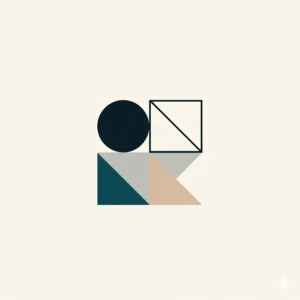
2. Gradient Glow Effects
Futuristic gradients with neon vibes are trending. Think glowing purples, electric blues, and warm sunset blends. Perfect for tech and creative brands.

3. 3D Metallic Logos
Brands want to look premium, and nothing screams luxury like polished 3D metallic effects. Expect chrome, gold, and steel finishes shining across digital platforms.
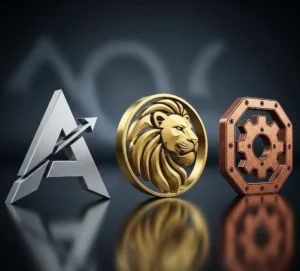
4. Hand-Drawn Authenticity
In contrast to sleek designs, organic hand-drawn logos are trending. These convey honesty, warmth, and a human touch—great for food, wellness, and eco-friendly brands.
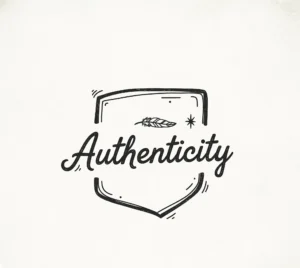
5. AI-Generated Abstracts
With AI tools exploding, abstract shapes that look futuristic, fluid, and unique are popping up everywhere. No two logos look alike—great for startups that want instant differentiation.
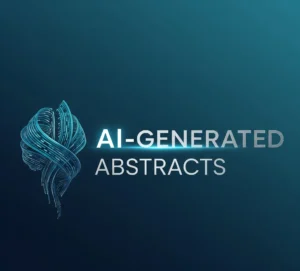
6. Bold Typography Marks
Wordmark logos with chunky, bold typography are trending for 2025. They’re readable, memorable, and pack a punch on digital screens.
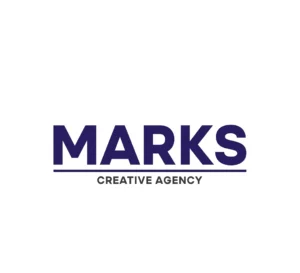
7. Nostalgic Retro Revival
’80s and ’90s inspired fonts, colors, and motifs are coming back. Think playful gradients, neon outlines, and VHS-style textures.
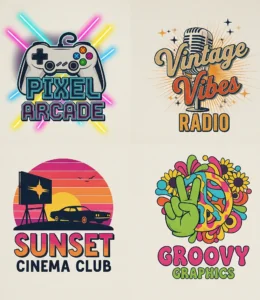
8. Motion-Friendly Logos
With video and reels dominating social platforms, brands want logos that animate easily. Motion-ready designs with simple transitions are a must.
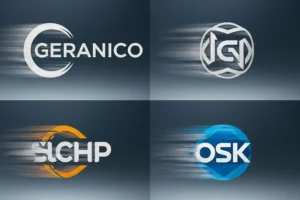
📌 Step-By-Step: How to Choose the Right Logo Trend for Your Brand
-
Know Your Audience → Tech lovers? Go futuristic. Eco crowd? Go organic.
-
Check Scalability → Logos must look good on a business card and a billboard.
-
Balance Trend with Timelessness → Don’t chase fads blindly—blend modern with lasting appeal.
-
Test on Digital Platforms → Preview how your logo looks on social media, websites, and mobile apps.
-
Get Feedback → Share mockups with your target audience before finalizing.
🔑 Why Following Logo Trends Matters
-
Keeps your brand relevant and modern.
-
Shows customers you’re in touch with design and culture.
-
Boosts digital visibility (a clean, simple logo = faster recognition online).
-
Differentiates you from outdated competitors.
❓ FAQs About Logo Design Trends 2025
1. What’s the biggest logo trend of 2025?
Minimalist geometry and AI-generated abstracts are leading the way.
2. Should small businesses follow logo trends?
Yes, but balance trends with timeless design so your brand doesn’t feel outdated in 2 years.
3. Are 3D logos practical?
Yes, but always keep a flat version for printing and simple applications.
4. How do AI-designed logos fit in?
They create unique abstract shapes and futuristic vibes—perfect for startups wanting to stand out.
5. What colors are trending in 2025?
Neon gradients, metallic shades, and soft earth tones for eco brands.
🎬 Conclusion
Logo design in 2025 is all about balance—between minimalism and expression, human touch and AI creativity, nostalgia and futurism. If your brand’s identity feels stale, this year is the perfect time for a refresh. A logo isn’t just a design; it’s your brand’s handshake to the world—make it count.

by James Dean | Aug 25, 2025 | Blogs, Branding Design, Logo Designing, Web Design
Top Logo Design Companies: Tips, Trends, and Best Practices for Businesses in 2025
Discover the top logo design companies in 2025, explore what makes them stand out, and learn how Articon Design Agency helps North American businesses with professional logos, websites, and growth strategies.
Introduction
When it comes to building a strong business identity, your logo design is often the very first impression potential customers see. A memorable logo conveys professionalism, trust, and brand personality in a single glance. But here’s the challenge: not all logo design companies are created equal.
If you’re searching for the top logo design companies in 2025, you’ll find plenty of options ranging from boutique design studios to large creative agencies. However, only a few truly stand out by blending creativity with strategy — and that’s exactly what businesses across the United States and Canada need to thrive.
In this guide, we’ll:
-
Highlight what makes the best logo design companies truly exceptional
-
Explore the top logo design agencies to consider in 2025
-
Break down the benefits of professional logo design for businesses
-
Share common mistakes to avoid when choosing a design partner
-
Show how Articon Design Agency helps North American brands grow through logos, websites, and data-driven strategies
What Are the Top Logo Design Companies?
Top logo design companies are agencies or studios that specialize in creating professional, memorable, and scalable logos that align with a brand’s identity and business goals.
These companies usually stand out because they:
-
Have experienced designers with diverse portfolios
-
Focus on brand strategy (not just visuals)
-
Provide custom designs rather than cookie-cutter templates
-
Offer related services such as branding, web design, and digital marketing
-
Deliver logos optimized for both print and digital use
👉 At Articon Design Agency, for example, our focus is not only on logo aesthetics but also on how your logo impacts visibility, recognition, and long-term growth.
Why Choosing the Right Logo Design Company Matters
Your logo is more than just a design — it’s the face of your business. Here’s why picking the right agency matters:
-
First Impressions Count – Customers form opinions in seconds, and a professional logo builds trust instantly.
-
Brand Recognition – A unique logo helps you stand out in competitive markets like the U.S. and Canada.
-
Consistency Across Platforms – From business cards to social media, your logo needs to look sharp everywhere.
-
Scalability & Longevity – A good logo grows with your business and won’t look outdated in a year.
-
Marketing & SEO Alignment – Logos designed with branding in mind support digital marketing campaigns, website conversions, and even search visibility.
Top Logo Design Companies in 2025
Here’s a look at some of the top logo design companies in 2025.
-
Headquarters: Serving clients across the U.S. and Canada
-
Specialties: Logo design, branding, website design, app design, SEO, and lead generation
-
Why Choose Them: Affordable, custom, and growth-driven design solutions with a proven track record.
-
USP: Unlike many design agencies, Articon doesn’t just design logos — we integrate branding with business development and digital growth strategies, ensuring your logo becomes part of a revenue-building system.
👉 Businesses across North America choose Articon for holistic design + marketing solutions.
2. Pentagram (Global Creative Icon)
-
Known for high-end, world-class design work for large enterprises.
-
Offers strategic branding and design but often comes with premium pricing.
-
Global leader in branding and identity, especially for corporate clients.
-
Ideal for Fortune 500 companies seeking rebranding.
-
Crowdsourcing platform offering affordable logo options.
-
Best for startups with small budgets, but lacks the strategic depth of agencies like Articon.
What Sets the Best Logo Design Companies Apart?
The best logo design companies in 2025 don’t just deliver graphics; they deliver strategic brand assets. Key differentiators include:
-
Research-Driven Approach – Understanding your industry, audience, and competitors.
-
Originality – No stock templates or clip art.
-
Scalability – Logos that adapt across websites, mobile apps, and physical merchandise.
-
Multi-Service Capabilities – From branding to web design, ensuring brand consistency.
-
Client-Centric Approach – Agencies like Articon focus on collaboration, affordability, and results.
Common Mistakes to Avoid When Choosing a Logo Design Company
-
Going Too Cheap – A $10 logo often results in poor design and long-term brand damage.
-
Ignoring Strategy – Don’t settle for “pretty”; your logo must communicate value.
-
Not Checking Portfolios – Always review past work for versatility and originality.
-
Forgetting About Usage Rights – Ensure you fully own the rights to your logo.
-
Overcomplication – Simplicity often leads to stronger recognition.
Trends Among Top Logo Design Companies in 2025
-
Minimalism & Flat Design – Clean, simple logos remain timeless.
-
Motion Logos – Animated logos for websites, apps, and social media.
-
AI-Assisted Design – Faster iterations with AI tools (but still needs human creativity).
-
Responsive Logos – Scalable designs that adapt across devices and formats.
-
Sustainability-Focused Branding – Green and eco-conscious elements for modern businesses.
👉 At Articon, we combine modern design trends with proven branding principles, helping U.S. and Canadian businesses stay ahead.
Conclusion
Choosing from the top logo design companies is a critical step for any business looking to establish or refresh its brand identity in 2025. Whether you’re a startup or a growing enterprise in North America, your logo should do more than look attractive — it should drive recognition, trust, and growth.
At Articon Design Agency, we go beyond design. We create logos, websites, and digital strategies that help businesses across the U.S. and Canada not only look professional but also grow consistently.
👉 Contact Articon Design Agency today to get started with a custom logo design, professional website, or data-driven lead generation strategy that fits your goals.
FAQs About Top Logo Design Companies
1. What are the top logo design companies in 2025?
The top logo design companies include Articon Design Agency, Pentagram, Landor & Fitch, 99designs, and Fiverr Pro designers. Each caters to different audiences, but Articon is the best balance of affordability, quality, and strategy for North American businesses.
2. How much does it cost to hire a top logo design company?
Costs vary from $300 to $50,000+ depending on the agency and project scope. Articon offers competitive pricing for small and medium-sized businesses.
3. Why should I choose Articon Design Agency over other logo companies?
Articon provides custom logos, branding, and marketing solutions designed to help businesses grow — not just look good. Plus, we serve clients across the U.S. and Canada with affordable packages.
4. How do I know if a logo design agency is right for my business?
Look for agencies with strong portfolios, positive client feedback, and a strategic approach (not just pretty visuals). Articon checks all these boxes.
5. Can top logo design companies also help with websites?
Yes, many do. For example, Articon offers website design, app development, SEO, and lead generation services to complement logo design.
6. Should I hire a freelancer or a logo design agency?
Freelancers are cheaper but risk inconsistency. Agencies like Articon provide a full-service solution with strategy, branding, and long-term support.
7. What’s the latest trend in logo design in 2025?
Minimalist, responsive, and animated logos are leading trends. Articon ensures your brand remains modern and competitive.
8. How long does it take to get a logo from a top agency?
Typically, 2–6 weeks, depending on revisions and project scope. Articon balances quality with efficiency.
9. Do I get full ownership of my logo?
Reputable agencies, including Articon, provide complete rights to your logo after final delivery.
10. Can Articon Design Agency work with businesses outside North America?
Yes! While our core focus is the U.S. and Canada, Articon serves clients globally with the same commitment to quality and growth.
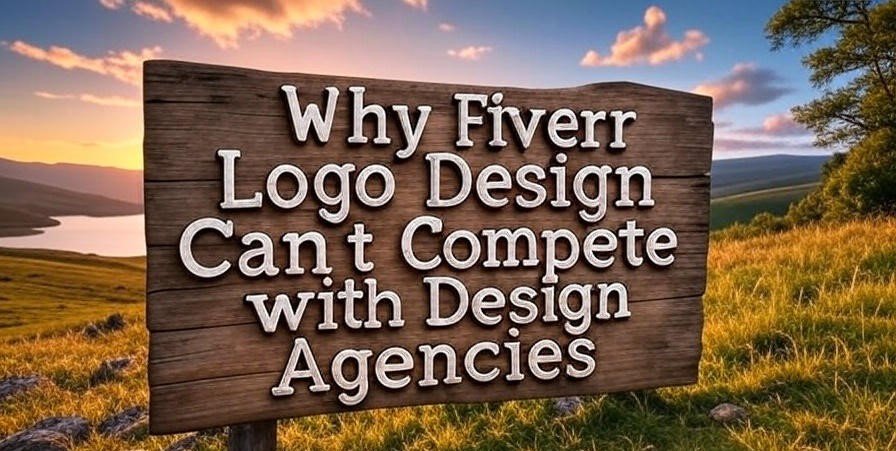
by James Dean | May 27, 2025 | Blogs, Branding Design, Logo Designing, Marketing, Sports Branding, Writing Tips
Why Fiverr Logo Design Can’t Compete with Design Agencies or Advertising Heritage Experts
A logo for any brand is like its Bright, Shiny Teeth that shine when the business Smiles. For startups and small businesses, platforms like Fiverr promise affordable logo designs with prices as low as $5, offering a quick fix for tight budgets. While tempting, these budget services often pale in comparison to the expertise, vision, and enduring value provided by professional design agencies or individuals steeped in advertising from a young age due to family legacies. This blog delves into why choosing a design agency or an advertising heritage expert is a smarter investment for crafting a logo that elevates your brand.
The Appeal of Fiverr’s Low-Cost Logos
Fiverr’s freelance marketplace connects businesses with designers offering logo creation at unbeatable prices. With fast delivery, a vast pool of freelancers, and customer reviews to guide choices, it’s an accessible option for those starting out. Yet, the low cost often reflects compromises in quality, depth, and originality that can hinder a brand’s long-term success.
The Superiority of Design Agencies
Professional design agencies bring a level of sophistication and strategic insight that Fiverr’s model struggles to match. Here’s why they stand out:
1. Strategic Brand Immersion
Agencies begin with a deep dive into your business, exploring your mission, audience, and market landscape. This groundwork ensures the logo reflects your brand’s core identity and resonates with your target customers. For instance, agencies may hold discovery sessions to align the design with your business goals, creating a logo that tells your story.
Fiverr freelancers, constrained by time and budget, often rely on brief client inputs without the capacity for in-depth research. The result is frequently a visually pleasing but shallow design that lacks strategic grounding.
2. Team-Driven Creativity
Design agencies employ diverse teams, including illustrators, brand consultants, and marketing specialists, who collaborate to craft a cohesive logo. This collective expertise ensures every element—color, shape, typography—is purposeful and polished. Agencies also use premium design software and industry-standard tools to deliver high-quality outputs.
Most Fiverr freelancers work alone, relying on their individual skill sets. Even talented freelancers may lack the collaborative input or advanced resources that agencies provide, limiting the depth of their designs.
3. Refined Design Process
Agencies follow a meticulous process, from initial sketches to multiple revisions and final deliverables. They provide comprehensive assets, such as scalable vector files, brand style guides, and logo variations for different platforms. This ensures the logo is versatile and ready for any use, from business cards to billboards.
In contrast, Fiverr’s budget packages often restrict revisions or deliverables. A low-cost package might offer only one or two tweaks, and the final files may not support professional applications like large-scale printing.
4. Lasting Brand Impact
A logo from an agency is built to endure, aligning with your brand’s vision and adapting to future growth. Agencies prioritize timelessness and versatility, ensuring the logo remains effective across mediums and over time.
Fiverr logos, while cost-effective initially, may lack the foresight to grow with your brand. This can lead to costly redesigns as your business evolves, negating the initial savings.
The Edge of Advertising Heritage Experts
Individuals raised in families with advertising as a generational business bring an unparalleled perspective. Their lifelong immersion in the industry sets them apart from both Fiverr freelancers and even some agencies. Here’s what makes them unique:
1. Instinctive Industry Mastery
Growing up in an advertising family means early exposure to campaigns, client dynamics, and branding strategies. These professionals often learned the craft organically, absorbing lessons from family members who built successful agencies or campaigns. This gives them a natural grasp of what makes a logo resonate with audiences.
For example, someone raised in this environment might have watched their parents create iconic brand identities, giving them an intuitive edge over freelancers who learned design through formal education or self-training.
2. Access to Industry Networks
Advertising heritage experts often inherit connections with printers, marketers, and other creatives. These relationships enable them to deliver logos that integrate seamlessly into broader marketing efforts, such as ad campaigns or product packaging.
Fiverr freelancers typically operate in isolation, lacking the networks to offer such comprehensive solutions, which can limit the logo’s impact in larger branding strategies.
3. Balancing Trends with Timelessness
Years of observing the advertising world give legacy experts a keen sense of what’s trendy versus what’s timeless. They can craft logos that feel fresh yet endure, avoiding the trap of overly trendy designs that quickly fade. This balance is critical for businesses aiming for long-term relevance.
Fiverr designers, especially those early in their careers, may lean heavily on current trends, producing logos that look dated within a few years due to a lack of historical perspective.
4. Boutique Expertise with a Personal Touch
Many advertising heritage experts run small studios or freelance independently, blending agency-level expertise with personalized service. Their deep-rooted passion for advertising drives them to deliver logos with care and precision, often surpassing the cookie-cutter approach of budget platforms.
Hidden Drawbacks of Fiverr Logos
While Fiverr’s affordability is appealing, it comes with risks:
Template-Based Designs: Many freelancers use pre-made templates or stock elements, resulting in logos that lack uniqueness and may resemble others in the market.
Restricted Revisions: Low-cost packages often limit feedback rounds, leaving you with a design that doesn’t fully align with your vision.
Surface-Level Branding: Fiverr logos rarely account for broader branding needs, such as integration with websites or marketing collateral.
File Format Issues: Some freelancers deliver low-quality files unsuitable for professional use, requiring additional investment to correct.
Design agencies and heritage experts, by contrast, deliver bespoke logos with professional-grade files and strategic alignment, saving you from future headaches.
When Fiverr Might Suffice
Fiverr can work for low-stakes projects, like a logo for a personal hobby or a one-off event. If your budget is minimal and long-term branding isn’t a priority, Fiverr’s speed and affordability can meet your needs. However, for businesses aiming to establish a strong, memorable identity, the expertise of a design agency or advertising heritage professional is unmatched.
Final Thoughts
A Logo is not just a simple Graphics Created by Designer for you, it is the face that world recognizes your brand for, While Fiverr offers a quick and cheap solution, it can’t rival the strategic depth, collaborative expertise, or lasting impact of a design agency or an advertising heritage expert. Agencies provide structured, team-driven solutions, while legacy professionals bring a lifetime of industry insight and personal dedication. For businesses serious about their brand, investing in these professionals ensures a logo that not only stands out but also stands the test of time.
Frequently Asked Questions (FAQs)
1. Why are Fiverr logos so affordable compared to design agencies?
Fiverr freelancers compete on price, often using templates or streamlined processes to keep costs low. This allows for quick, budget-friendly designs but sacrifices depth and originality. Agencies invest in research, team collaboration, and premium tools, which increases costs but delivers a more robust logo.
2. Can I find a high-quality logo on Fiverr by choosing a premium freelancer?
Higher-priced Fiverr freelancers may offer improved quality, but the platform’s structure often limits their ability to provide the strategic insight or comprehensive deliverables of an agency or heritage expert. Even premium packages may lack the depth needed for a lasting brand identity.
3. What sets advertising heritage experts apart from other designers?
Heritage experts grow up immersed in advertising, gaining early insights into branding, consumer psychology, and campaign strategies. This lifelong learning gives them a unique ability to craft logos with both emotional resonance and market savvy.
4. How much does a professional logo typically cost?
Costs vary based on the provider. Design agencies may charge $1,500 to $100,000, depending on their reputation and project scope. Advertising heritage experts often charge similar rates for boutique services or slightly less for freelance work, reflecting the value of their tailored expertise.
5. Will I need to redesign a Fiverr logo later?
Fiverr logos may require redesigns if they lack versatility or strategic alignment with your brand’s growth. Professional logos from agencies or heritage experts are designed for longevity, reducing the need for frequent updates.
6. Should I choose a design agency or an advertising heritage expert?
Choose an agency for a full-suite branding package, including logos, websites, and marketing materials. Opt for a heritage expert if you want a high-quality logo with personalized service and deep industry insight, especially for smaller or niche projects.
by James Dean | Mar 2, 2025 | Blogs, Branding Design, Logo Designing, Marketing
Logo Love: How a Tiny Image Can Make (or Break) Your Brand’s Big Moment 🚀
Let’s get real—your logo isn’t just a fancy doodle. It’s your brand’s handshake, wink, and first impression. In a world where attention spans rival goldfish, a killer logo isn’t optional; it’s survival gear. Ready to turn your “meh” emblem into a “WOW” magnet? Buckle up.
Why Your Logo Needs a Glow-Up (Stat!)
1. Your Logo’s Secret Superpowers 💥
Forget capes—logos are the unsung heroes of branding. Here’s why yours deserves an Oscar:
- “Hey, I Know You!” Vibes
A unique logo cuts through the noise like a TikTok dance trend. Think Nike’s swoosh or Apple’s… apple. Instant recognition = free marketing.
- Trust, But Verify (Your Designer)
A pro logo screams, “We’re legit!” 73% of consumers judge credibility based on visuals alone. No pressure.
- One Logo to Rule All Feeds
From Instagram to your truck’s door, consistency builds brand muscle. Bonus: You avoid looking like a identity crisis on legs.
- Heartstring Tugging 101
Colors and shapes can whisper “adventure” or shout “luxury.” Emotional bonds = customers who stick like glitter.
2. Articon’s Logo Lab: Where Magic Meets Math 🧪
We’re not your grandma’s design agency. Here’s the tea:
- Budget-Friendly, Not Basic
Get premium quality without selling a kidney. Our packages start at [$39.99], which is cheaper than your monthly oat milk latte habit.
- AI: The Design Sidekick You Need
Got a rough draft from Canva? We’ll Frankenstein it into a masterpiece with AI precision. Editable files included—no tech degree required.
- No-Sweat Price Guessing
Use our free calculator to ballpark costs. Spoiler: You’ll spend less than that “quick” Target run.
3. Why Articon Doesn’t Just “Phone It In” 📱
- Custom Fit, No Clip Art
We treat your brand like the VIP it is—zero cookie-cutter designs.
- Zoom Meeting? Never Heard of Her
Our process is smoother than a buttered slide. First draft in 72 hours.
- We’re Like the Hotel California of Support
Need tweaks in 2025? We’ll still answer your emails.
Mic Drop Conclusion 🎤
Your logo isn’t just art—it’s a business asset. A weak one screams “amateur hour,” while a pro design becomes your silent salesperson. Articon doesn’t just make logos; we build brand legacies.
👉 Ready to Logo-fy Your Awesomeness?
Click here to start your glow-up

by James Dean | Feb 23, 2025 | Blogs, Branding Design, Logo Designing, Marketing, Web Design, Web Development
How Much Should You Budget for Professional Logo & website Design?
Starting Mark:
Did you know that 94% of first impressions of a business are design-related? Your logo and website are the digital handshake of your brand, shaping how customers perceive your credibility and professionalism. Whether you’re a startup or an established business, investing in high-quality design isn’t just about aesthetics—it’s about driving growth. In this guide, we’ll break down the costs of professional logo and website design, explore factors that influence pricing, and share actionable tips to help you budget wisely. Let’s dive in!
Why Invest in Professional Logo Design and Website Design?
1. Brand Identity: Your First Impression Matters
Your logo is the face of your brand, while your website acts as your 24/7 storefront. Together, they create a cohesive identity that builds trust and recognition. A poorly designed logo or website can make your business appear unprofessional, pushing potential customers away.
2. User Experience (UX) Drives Conversions
A cluttered website or confusing navigation frustrates visitors. Professional designers prioritize UX, ensuring your site is easy to navigate, loads quickly, and guides users toward actions like purchases or inquiries. For example, a well-designed e-commerce site can reduce cart abandonment rates by up to 35%.
3. SEO and Mobile Responsiveness
Google loves websites that load fast, work seamlessly on mobile devices, and offer intuitive navigation. A professional designer ensures your site is optimized for search engines and responsive across all screens, boosting your visibility in search results.
Factors Influencing Logo Design Costs
1. Designer Expertise
- Freelancers: $200–1,500 (ideal for startups).
- Agencies: $1,000–10,000+ (includes research and strategy).
- DIY Platforms: $20–200 (limited customization, e.g., Canva).
2. Complexity of the Design
A simple text-based logo (like Google’s) costs less than a custom illustration or mascot (think Starbucks’ siren).
3. Revisions and Add-Ons
Most designers include 2–3 revisions in their packages. Need a brand style guide or vector files? Expect to pay 10–20% extra.
Factors Influencing Website Design Costs
1. Type of Website
- Basic Brochure Site: $1,000–5,000 (for portfolios or small businesses).
- E-commerce Site: $5,000–20,000+ (product listings, payment gateways).
- Custom Web Apps: $20,000–100,000+ (tailored functionality, like Uber).
2. Design Approach
- Template-Based (WordPress, Squarespace): Affordable but less unique.
- Custom Design: Higher cost for a one-of-a-kind site that aligns with your brand.
3. Functionality and Ongoing Costs
Integrations (e.g., CRM tools), plugins, hosting (50–50–200/month), and maintenance (100–100–500/month) add to long-term expenses.
Average Costs for Logo and Website Design
| Service |
Price Range |
| Logo Design |
$200–10,000+ |
| Basic Website |
$1,000–5,000 |
| E-commerce Website |
$5,000–20,000+ |
| Combined Packages |
Save 10–15% when bundling logo and website services. |
5 Budgeting Tips for Small Businesses
- Start with Essentials
Prioritize mobile responsiveness and a clear call-to-action (e.g., “Contact Us”).
- Compare Quotes
Get estimates from 3–5 designers or agencies to find the best value.
- Plan for Hidden Costs
Domain registration ($10–50/year), SSL certificates ($50–200/year), and stock images ($5–100/image).
- Future-Proof Your Investment
Allocate 10–15% of your budget for future updates (e.g., SEO tweaks or adding new features).
Cost vs. Value: Why Professional Design Pays Off
- Higher ROI: A polished website can increase conversion rates by 200%.
- Avoid Costly Redesigns: Cheap DIY solutions often require expensive fixes later.
Real-World Examples
- Startup Success: A coffee shop spent $3,000 on a freelance-designed logo and Squarespace site, attracting 500 monthly customers.
- Mid-Sized Growth: A skincare brand invested $15,000 in a custom logo and Shopify store, doubling online sales in 6 months.
- Enterprise Powerhouse: A tech company paid $50,000+ for a rebrand and custom web platform, securing a 40% increase in investor interest.
Conclusion
Budgeting for a logo and website design is about balancing cost and quality. While a basic logo might cost $200, and a simple website $200,and a Medium website $1,000, investing in professional services ensures your brand stands out and drives results. Ready to take the next step? Request a quote from a trusted designer today—it’s the first move toward building a brand that customers trust and remember.
Your logo and website aren’t expenses—they’re investments in your business’s future.

Logo Package Details
by James Dean | Feb 22, 2025 | Blogs, Branding Design, Digital Marketing, Logo Designing, Web Design
Branding Agency for Startups: How to Find the Perfect Match in 2025
Published on: 23/3/2025
Why Your Startup Needs a Branding Agency 🎨
Launching a startup is like setting sail on uncharted waters. You’ve got a great idea, but without a strong brand, you’re just another boat in a vast ocean. A branding agency for startups can help you stand out, connect with your audience, and build trust. But with so many agencies out there, how do you pick the right one? Let’s break it down.
What Does a Branding Agency Actually Do? 🤔
Before you go shopping for an agency, let’s get clear on what they bring to the table:
✅ Brand Strategy: Defining your startup’s mission, values, and unique positioning. ✅ Logo & Visual Identity: Crafting a logo, color scheme, typography, and overall brand aesthetic. ✅ Messaging & Tone of Voice: Ensuring consistency in how your brand communicates. ✅ Website & Digital Presence: Designing a website that aligns with your branding. ✅ Marketing & Social Media Assets: Providing the right content to engage your audience.
A great agency doesn’t just design a cool logo; it help tell your brand’s story in a way that resonates.
How to Choose the Best Branding Agency for Your Startup 🔍
Not all branding agencies are created equal, and choosing the right one is crucial. Here’s what you need to consider:
1. Start with Their Portfolio 📂
Would you trust a chef who’s never cooked a meal? Probably not. The same logic applies here. A good branding agency will have a portfolio showcasing their work. Look for:
- Designs that align with your vision.
- Case studies showing real results.
- Experience in your industry or with startups.
2. Check Their Pricing 💰
Startups usually have tight budgets, so pricing matters. Branding costs can vary widely—from a few thousand dollars to six figures. Consider:
- Do they offer startup-friendly pricing?
- Is there a clear breakdown of costs?
- Are they transparent about revisions and additional fees?
3. Evaluate Their Process 🛠️
A solid agency has a structured process. Ask them:
- What steps do they take from concept to completion?
- How do they ensure brand consistency?
- Do they involve you in the process, or just present a finished product?
4. Read Client Reviews ⭐
Client feedback is gold. Look for:
- Google reviews, Trustpilot, or Clutch ratings.
- Testimonials on their website.
- Any red flags about missed deadlines or poor communication.
5. Assess Communication & Chemistry 🗣️
A branding agency is your creative partner. If the vibes are off, collaboration will be a struggle. Consider:
- Are they responsive and easy to communicate with?
- Do they understand your startup’s vision?
- Are they excited about your project or just going through the motions?
Mistakes to Avoid When Hiring a Branding Agency 🚨
❌ Going for the Cheapest Option – Branding is an investment. Cheap work often means generic results. ❌ Skipping Research – Don’t just hire the first agency you find. Do your homework. ❌ Ignoring Cultural Fit – A branding partner should align with your startup’s energy and values. ❌ Not Setting Clear Expectations – Be upfront about your budget, timeline, and expectations.
Conclusion: Ready to Build an Iconic Brand? 🚀
Your startup’s success hinges on how well your brand connects with customers. A great branding agency can set you up for long-term growth by crafting a compelling identity. Take your time, do your research, and choose wisely!
by James Dean | Feb 22, 2025 | Blogs, Branding Design, Digital Marketing, Logo Designing, Web Design
Picking Your Design BFF: How to Choose a Killer Agency in 2025 (Without Losing Your Mind)
Struggling to find a design agency that gets your brand? This no-BS guide spills the tea on red flags, budget hacks, and questions to ask. Spoiler: No awkward first dates here.
Let’s be real: Choosing a design agency feels like swiping through Tinder for your brand. You’ve got the “show me your portfolio” small talk, the “what’s your budget?” awkwardness, and the fear of ending up with a “graphic design is my passion“ disaster. But 2025’s design world is wild—AI tools, TikTok-fueled trends, and agencies that promise the moon (but deliver MS Paint). Don’t panic. I’ve roasted 12 lattes and 30 years of writing chaos to help you dodge the cringe and find your brand’s soulmate. Let’s dive in.
In-House vs. Agency: Which Side Are You On?
Spoiler: It’s not a Marvel vs. DC battle. Here’s the tea:
In-House Team Pros ✅
- Control Freaks Unite: Need last-minute tweaks at 3 AM? Your team’s on it.
- Brand Whisperers: They live your brand’s vibe (and caffeine addiction).
- Cost Predictability: Salaries are fixed—no surprise invoices.
In-House Team Cons ❌
- Skill Gaps: Expecting Bob from accounting to master 3D animation? Good luck.
- Burnout Central: Overworked teams = meh creativity.
Design Agency Pros ✅
- Swiss Army Knife Skills: Need a logo, website, and Insta Reels? They’ve got specialists for all of it.
- Fresh Eyes: No “we’ve always done it this way” baggage.
- Scalability: Ramp up/down projects like a Netflix subscription.
Design Agency Cons ❌
- Budget Burns: Premium talent = premium prices.
- Communication Hiccups: Time zones, anyone?
TL;DR: If you’re a startup needing everything, go agency. If you’re Coca-Cola 2.0, build in-house.
The Ultimate Agency Vetting Checklist (No Boring Questions, Promise)
Forget “What’s your process?”—ask these instead:
- “Show Me the Worst Project You’ve Done”
(If they laugh and share a fail, they’re human. If they dodge, run.)
- “Can You Work With My Glitchy Tech Stack?”
(No one wants a Figma wizard who faints at WordPress.)
- “What’s Your ‘Oh Sh*t’ Backup Plan?”
(Deadlines get messy. Do they have a Plan B… or just prayers?)
- “Who’s My Day-One Contact?”
(If they say “the intern,” exit stage left.)
- “Do You Actually Understand Gen Z/AI/My Weird Niche?”
(Example: If you sell alpaca sweaters, can they meme-ify llamas?)
Red Flags That Scream “Swipe Left” 🚩
- Portfolios That Look Like 2012 Tumblr
- Vague Pricing Like “It Depends”
- Zero Case Studies (Did they even DO work?)
- Ghosting You for 3 Days
Conclusion:
Picking a design agency shouldn’t feel like defusing a bomb. Use this guide to filter the ”we’re a family” cringe from the legit pros. And hey, if you’re still stuck? [Book a Free Rant Session] with Articon. We’ll help you dodge the BS and find your perfect match—no ghosting, we swear.
Recent Comments